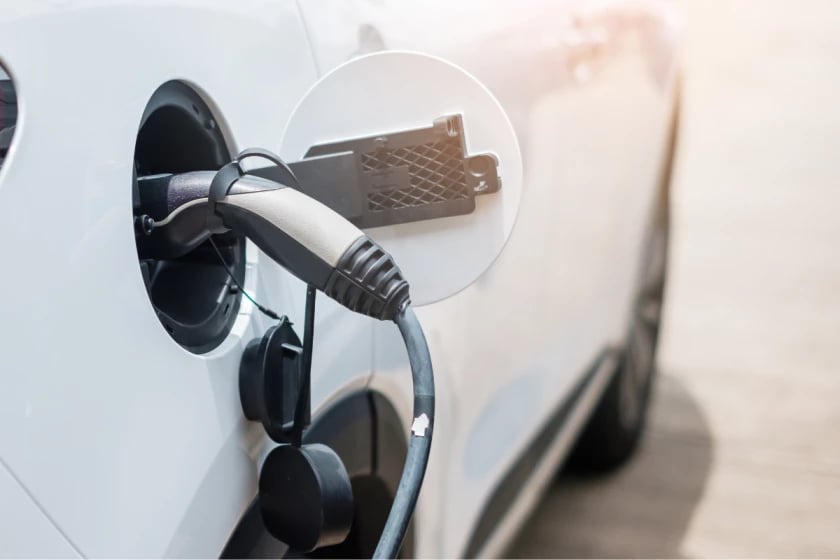WHAT IS VEHICLE-TO-GRID, OR V2G, TECHNOLOGY?
2 years ago
If you have spent time researching the wider smart EV charging field, you have probably come across vehicle-to-grid technology or V2G. While some skim over its meaning, it is crucial to thoroughly understand what V2G entails and how it works if you are interested in the cutting edge of the EV industry.

When you charge your EV, you draw power from the grid to your vehicle. When using vehicle-to-grid technology, this process is reversed. It means that instead of the grid providing power to your batteries, they provide power back to the grid. This excess power you have sent back is then used for all the functions that depend on the power grid – lights, electronics, you name it.
HOW DOES V2G WORK?
The digital revolution and the use of smart technology throughout society have allowed complex solutions to be implemented across the board. V2G technology is no exception; it is controlled by communication between your EV charging station and the central grid. The principle is essentially the same as that which underlies off-peak electricity prices: the grid can monitor demand and respond accordingly. All that V2G technology adds is another potential source of supply.
WHY IS IT NECESSARY?
Because V2G technology allows the grid to draw power from plugged-in EV batteries, it can serve as an added layer of protection against considerable surges in demand, expanding the grid's capacity to accommodate increased use. Let's say EVs are connected to the grid during the work day, where they are not used and are sat idle at full battery capacity. If demand suddenly increases – the temperature goes up, and air conditioning use soars, for example – then the grid can draw on these EV batteries to help power it, reducing the strain on the system and minimizing the potential for overloads.
IS IT ECO-FRIENDLY?
In a word: yes. One of the key benefits of vehicle-to-grid technology is its ability to support the increased adoption of renewables by providing a huge increase in the overall battery capacity of the grid. An often-touted drawback of renewable energy is that its output is weather-dependent. While this is often heard through the lens of adverse weather – "what do solar panels do when it's not sunny?" – it can also be a problem in conditions that are too good.
In extremely windy weather, for example, wind turbines produce huge amounts of excess power. Without the capacity for storage, this power – which is generated for free and is completely renewable – risks being wasted. With V2G technology, however, excess power produced by renewable sources can be stored in EVs when significant production increases occur, generating a 'debit' that can then be repaid when demand is high and production low. The critical point here is that this happens automatically, with no need for the EV owner to pay attention to or even be aware of this process.
IS IT EFFICIENT?
One could be forgiven for thinking this extra technology would lead to increased electricity use and inefficient waste due to the processing power involved. In fact, the opposite is true. While minor amounts of electricity are consumed in the computational costs of utilizing V2G, its wider effect on the efficiency of power usage far outweighs them. By helping the grid use the power resources at its disposal better, V2G saves power, thereby effectively increasing the amount of electricity available.
WHAT ARE THE DOWNSIDES?
There are minor drawbacks to V2G, some of which are irrelevant to EV owners and one of which is negligible at most. First, because batteries are frequently drawn from and recharged when using V2G technology, their long-term capacity can be slightly impacted. Current estimates put this impact at a few percent at most – a small price to pay for the greener, cleaner, and more effective use of energy.
The other drawbacks surround the fact that this technology is in its infancy. As a result, only certain EV manufacturers make use of it. While this does not concern EV owners precisely, if you are especially keen to help with the broader adoption of V2G technology, then it is worth checking that your potential EV uses it before buying.
WHAT DOES THE FUTURE OF V2G LOOK LIKE?
Undoubtedly, smart EV charging solutions that contribute to sustainability and power conservation, and efficiency will grow in scale. The broader implementation of V2G will depend on manufacturers using this technology in their EVs, older charging stations being converted so that they can adopt it, and new EV charging stations featuring V2G technology as standard.
As the use of renewable energy grows alongside the mass purchase of EVs worldwide, V2G technology offers an elegant solution to two problems: charging EVs efficiently and storing excess power. To speed this along, some states even offer payment for the energy returned to the grid from your EV via V2G, meaning that you can earn money while your car sits idle and plugged in. So there we have it, V2G represents the future of smart EV charging and can also add to your wallet – as if you needed any more reasons to join the EV revolution!
Share it with friends!
We’re here to help!